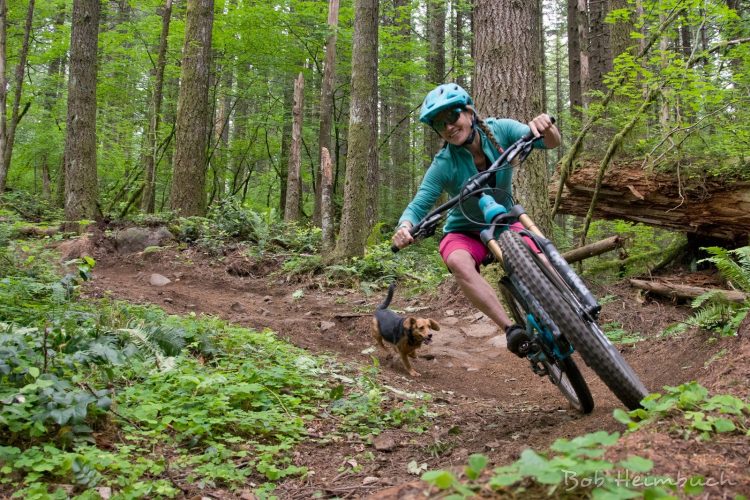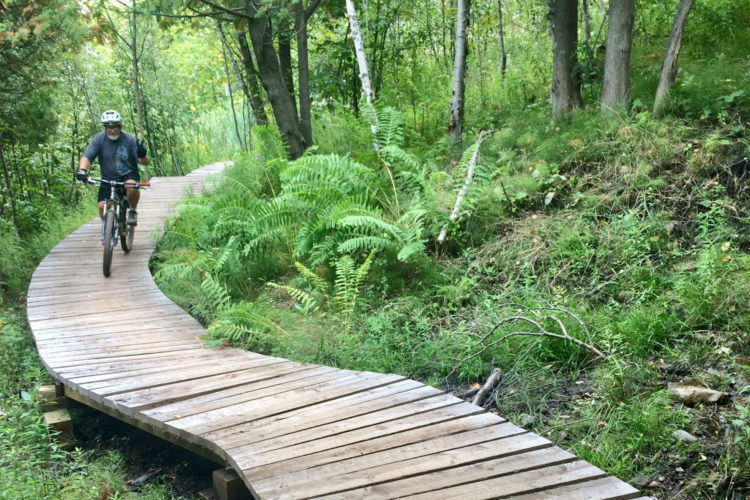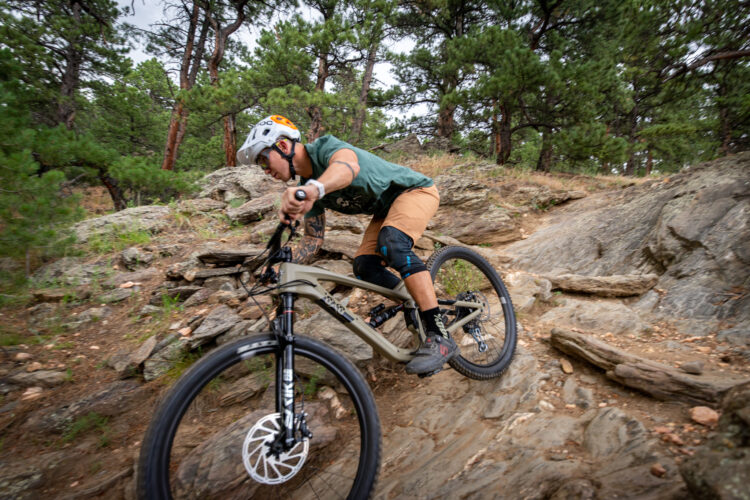
Coronavirus has shut down a lot of our lives this year; festivals, races, trailheads, trails, volunteerism, digging, and group rides. When it comes down to it, the pandemic has shuttered nearly everything that is organized for mountain biking. The message to riders in March and April was clear: ride alone.
That became a difficult task however in many parts of the world, as demand for bikes and outdoor spaces increased tenfold. And, for most folks, riding is mountain biking. For die-hard diggers, trail builders, and stewards who provide the trails that many of us take for granted, the message wasn’t quite as clear.
With more crowded trails, and fewer organized dig days everywhere, mountain bike advocates and land managers are seeing the result of a unique combination of circumstances; an increase in unsanctioned trail building.
After speaking with Whistler Off-Road Cycling Association (WORCA), and Evergreen Mountain Bike Alliance (EMBA), the statewide MTB organization in Washington, as well as Washington state’s Department of Natural Resources, there was a general consensus as to why both organizations are seeing and hearing about more rogue builders lately. People likely have more time on their hands and want to get out and into nature, whether it’s legal or not.
The Washington Department of Natural Resources says that all state-managed lands were closed to the public from March 26 through May 4, including DNR lands, state parks, and Washington Department of Fish and Wildlife lands. Though the DNR regularly sees unsanctioned trails, there’s been an increase in areas of the state lately.
“We are seeing significantly increased use across the state, which is amazing,” says Washington DNR spokeswoman Leah Dobey. “We’re excited that more people and new users are finding our lands and enjoying the outdoors. Unfortunately, we have also seen an increase in illegal use, too.”
Don’t worry. It’s not just mountain bikers. Dobey has seen an increase in user-built motorized trails and fire rings, vandalism, trash dumping, and dispersed camping where it isn’t allowed.
“Unsanctioned trails aren’t being built by only one type of user, which I think shows that everyone is getting a bit stir crazy,” she says. “It could also be due to the amount of use on official trails.”
Rogue mountain bike trails have their own set of problems though. Dobey says that rogue trails can impact other DNR management objectives, and interfere with sensitive habitats and cultural resources. Not to mention that when they discover user-built trails, they often have to decommission them, putting tax dollars to work destroying the trail that someone put a lot of work into, and recovering the environment.
EMBA also mentioned that they have seen user-built trails that are problematic because they cross several property lines with one trail. WORCA adds that it’s not the best thing for the image of the mountain biker either when it comes to maintaining relationships with land managers. Even though they don’t have any sort of involvement with rogue building, responsibility is assigned to one user group usually when it comes to rogue trails.
These relationships can take a long time to build, just as it can take a long time to get a trail approved and built following the approval process – another probable reason for rogue building.

“It can vary depending on who the land managers are, the matrix of stakeholders related to that land, and the regulations relating to it,” says Trevor Ferrao, the executive director of WORCA. He cites WORCA’s latest trail project, Far Out and Flashback which started in 2014, however they just started digging the trail in 2020. Because of a wildfire thinning project and working with several jurisdictions for the process, it’s taken six years. That’s not always the case, and other trails can take less than one year from vision to completion. It just depends.
Many of the rogue trails that are popping up seem to be DH-like, technical, fall-line trails, according to the staff at WORCA and EMBA. This also makes it harder to maintain relationships with land managers. When the advocates at EMBA are getting approval from land managers to build black and double-black trails to satisfy the advanced audience and rogue trails are still being built, well it doesn’t look good.
WORCA says they are trying to educate people about the issues that unsanctioned building creates, and are trying to recruit more people to dig on their volunteer nights.
“These provide a safe, legal way for people to participate in trail building,” says Ferrao. Then, builders can learn about sustainable trail building and contribute to the community.
EMBA’s approach has been similar. They are actively trying to recruit anyone who is interested in rogue building in order to legitimize their efforts. By getting involved with a mountain bike advocacy organization, riders can advocate for the type of trails they want, build and create in the woods, and contribute to better trail systems. Yvonne Kraus, the executive director of EMBA is also pushing land managers to open more volunteer opportunities as a way to remove barriers for diggers. With trail days down this summer, she wonders if there’s a way that they can get volunteers on the trail more independently.
“Where can we let the kids play responsibly? Rather than shaking the finger or pointing the finger at people, recognizing the fact that people want to work in the woods and there is a dire need for help.”
With more people on the trails lately and a lack of organized volunteer days, singletrack everywhere could use a little love.
“It’s fun, so why can’t we encourage the fun in a legal and productive way,” she says. “There have got to be options for that and to get past ‘no.'”

With so much mountain bike specific trail being built lately by dedicated organizers, it’s also refreshing to some that there are more people who are interested in digging.
“This revival in building could be celebrated,” adds Ian Terry, the communications manager for EMBA, explaining that a lot of riders don’t have any interest in trail building and rely solely on mountain biker organizations for their trails. Deep down in mountain bike culture lies the “no dig, no ride” philosophy that many riders never experience.
Even the Department of Natural Resources seems to understand, but Leah Dobey still wishes builders would focus on sanctioned trails.
“Also, I think trail building is becoming part of the activity for some mountain bikers,” she says. “It’s challenging and rewarding.”



















